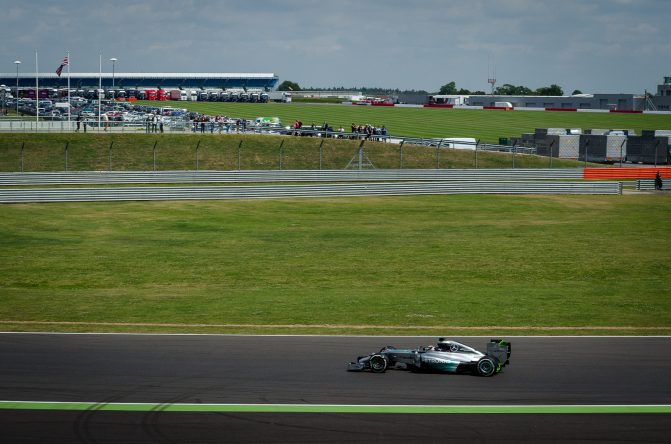‘All changed, changed utterly’, to borrow from Yeats. Formula 1 is often characterised by interminable stretches of mind-numbing stasis, yet all of a sudden its horizon looks very different. In any off-season, names leave the stage, and already we’ve had a few – Ron Dennis, Jenson Button among others. But just lately we got the Big Daddy. The near half century dominance by Bernie Ecclestone (in no sense an exaggeration) is over, an eventual consequence of Liberty Media taking over the sport’s commercial rights late last year.
While no one underestimates what Bernie has done for F1, the equally sudden sense of glad confident morning among the fraternity is unmistakable. With Bernie cast aside, those in and around the sport are now pointing in all directions at the things that can now be ‘fixed’. Reflecting on a sport that many thought had recently taken wrong turns in some paths and had been left behind in others.
However, things are unlikely to change overnight. Signed contracts remain signed contracts. F1 governance remains slow and creaking. F1 remains F1. Still, there are plenty of reasons to believe that in the long term the optimism around is well-founded.
The New F1 Cars – A Mixed Bag
The cars are changing in the immediate term for this forthcoming season (though these changes pre-date the change of ownership). When all convene in Melbourne for round one in late March, there will be wider tyres and more downforce from wider front and rear wings. This is part of the sport’s latest heavy revision of the regulations – a butterfly tendency which has, with justification, been the subject of mirth.
Quite why this latest change was made is lost on a few – particularly as it was framed but 18 months after probably the sport’s most radical technical change ever – but it seemed mainly from panic then that the previous breed of car wasn’t quick enough. The new regs come with a promise of machines five or six seconds a lap quicker.
The cars are predicted to look more impressive, both in their aesthetics and, perhaps, with their greater cornering speeds. But, some have noted, a F1 car already is 30 seconds a lap faster than a MotoGP bike, and this doesn’t harm the popularity of the latter.
As for whether it all will help F1 racing cars race each other, follow each other closely through corners so that they have a chance of passing, it may instead be worse than useless – as the general rule is that extra aerodynamic downforce works against that. Young Force India driver Esteban Ocon summed up the general paradox of the new cars: “from the look, it’s going to be awesome” he said, but also “it’s going to be harder to overtake, and there’s going to be less opportunities.”
For these reasons the sport is already looking beyond this current change to its next revision, one that will really tackle the overtaking problem. The new managing director for motorsport in F1, Ross Brawn, has already talked in such terms.
Formula 1 2017 – Change May Be Limited
There has been a reset for this year though, which means that there will not be a direct feed-in between Mercedes’s dominance of previous years and what we’ll get this season. This no doubt will be a relief for most of us watching on, looking for a bit of variation. While the word on the street is that Red Bull is well-placed to give Merc a hard time, as the extra downforce on the cars will suit the Bulls just fine.
Those hoping for vast change either in closing the pack up or shuffling the order are likely to be disappointed. The sport persists with the back-to-front thinking that changing the rules will ‘spice up the show’. However, the experience is that the precise opposite, rule stability, more likely gives us close racing in time. This is because when there is a change, often a single team, or if you’re lucky two of them will alone land on the right answers right away – either by good luck or good engineering – and thus leave their rivals floundering. Also the large outfits are best-placed to be the ones getting it right.
The sage Williams veteran Sir Patrick Head knows as much. “Any time you make significant changes the advantage will always go to the bigger teams” he said.
“When you have 750 employees or more against, say, Force India’s 300, of course the bigger teams can do more.
“If anybody was thinking of these rules with the aim of closing the field up then they’ve got rocks in their head. Any idea it will close the field up is nonsense.”
Not everything about Formula 1 has changed.




